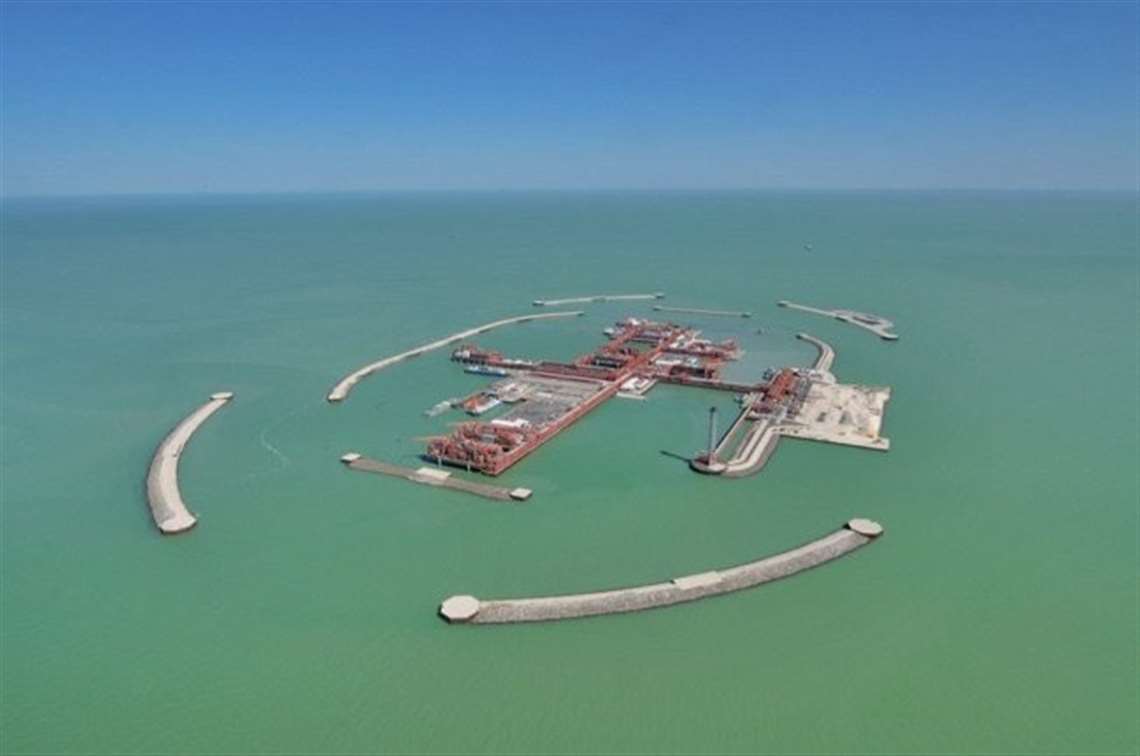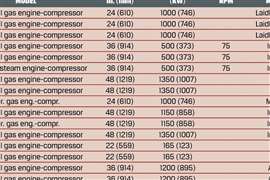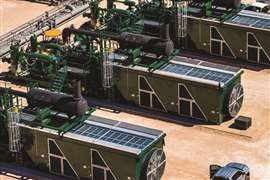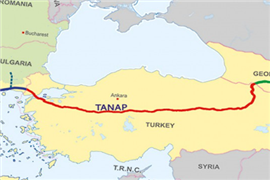Extraction In Troubled Waters
April 04, 2017

This article was originally published in the March issue of COMPRESSORtech2. Subscribe for free to receive every issue in your mailbox or your inbox.
Most big infrastructure and industrial projects must overcome significant hurdles, but in the oil and gas industry it seems feasibility and profitability are much more immediately tied to market circumstances, such as demand and prices of energy commodities, along with exquisite technical complexities.
One example of disrupted execution is the exploitation of the Kashagan oil field in the Kazakhstan portion of the Caspian Sea — a project that has been described at its origin as one of the biggest oil discoveries in history, and in hindsight, one of the most troubled.
The offshore oil field was discovered in 2000 in the northern part of the Caspian Sea, close to the coastal city of Atyrau on the Ural River. The location sports particularly harsh conditions, including sea ice for five months in the winter, temperature variations from -31° to 104°F (-35° to 40°C), and extremely shallow waters.
The field operator, North Caspian Operating Company N.V. (NCOC), said the size and technical complexity of the Kashagan field commanded a development in phases. Phase 1, known as the Experimental Program (EP), is currently being executed, while Phase 2 is in the initial design phase; additional phases are still under concept evaluation.
Regarding specific aspects of the project, the NCOC said that the use of conventional drilling and production technologies, such as concrete structures or jacket platforms that rest on the seabed, are not possible due to the shallow water and cold winter climate of the north Caspian Sea.
To protect the offshore facilities from harsh winter conditions and pack ice movement, they are being installed on artificial islands of two types: small unmanned drilling islands and larger, manned hub islands. Hydrocarbons will travel from the drilling islands to the hub islands via pipeline.
The hub islands will contain processing facilities to separate recovered liquid (oil and water) from the raw gas, as well as gas injection and power generation systems.
According to the NCOC, during Phase 1, around half of the gas produced will be re-injected back into the reservoir. Separated liquid and raw gas will be taken by pipeline to an onshore processing plant in Atyrau, where export-quality oil will be produced. Some of the processed gas will be sent back offshore for use in power generation while some will be used to generate power at the process plant itself.
The oil field operation started in 2013, but several sources then reported technical problems on the pipes connecting the hub island to the processing plants, which forced the stop of production. The Italian firm Saipem received a contract worth US$1.8 billion in early 2015 to build new pipes made of carbon steel with a diameter of 28 in. (711 mm), internally cladded with a corrosion-resistant alloy layer.
In January, the NCOC announced it had safely produced and exported 1.1 million tons (1 million tonnes) of crude oil and condensate from the Kashagan field.
Production began in September 2016 and is ramping up to a capacity of 180,000 bbl/d, the NCOC said. Once (sour) gas reinjection is initiated and optimized, Kashagan Phase 1 is expected to reach production capacity of 370,000 bbl/d.
The NCOC, which is a consortium composed of Eni, Royal Dutch Shell, Total S.A., ExxonMobil, KazMunayGas, China National Petroleum Corp. and Inpex, also announced that the government of Kazakhstan has approved the start of early engineering and design work toward a further expansion of Phase 1 production at the Kashagan field.
The government acknowledged the start of commercial production at Kashagan in November 2016. Kazakhstan’s president, Nursultan Nazarbayev, personally visited the site in Atyrau in December. With 9 to 13 billion barrels of recoverable oil, there is little doubt that the Kashagan field is a crucial project for the economy of Kazakhstan, worthy of the personal visit of the head of state.
According to the NCOC, the consortium will lose little time in building upon its accomplishment of a safe restart at the field.

The expansion project for Phase 1 is an investment to increase production by 80,000 bbl/d by installing additional raw gas compression and injection capacity in the Caspian Sea. The government’s approval allows the NCOC to begin early engineering and design work in 2017, and to develop plans for further engineering and design work in 2018. The project, when completed, could grow Phase 1 production capacity to a target level of 450,000 bbl/d.
“We are excited that the safe restart at Kashagan has opened the way for us to build further on what we’ve already accomplished,” said Bruno Jardin, NCOC managing director. “NCOC has an opportunity to increase the capital effectiveness of our pre-invested assets, and we intend to do so with a relentless focus on cost reduction, applied at the earliest stages, through a disciplined value-engineering process.”
According to Jardin, NCOC is also studying the potential co-development of its Kalamkas-Sea field and the Caspi Meruerty Operating Co. B.V.’s nearby Khazar field. Together these two fields have huge recoverable reserves of oil and gas. “We hope that the cost savings that can be achieved by the joint development of these fields will make their development economically viable, and if so, possibly also unlock the development of other fields in the Mid-Caspian,” Jardin said.
According to analyst company BMI Research, a key portion of the expansion for the Kashagan field is the proposed Trans-Caspian Oil Pipeline, a 500,000 barrel pipeline which is part of the next development phase for the oil field. The pipeline would connect Kashagan with the Baku-Tbilisi-Ceyhan pipeline in Azerbaijan.
BMI Research recently reported that Kazakhstan and Azerbaijan are in the final stages of negotiating the construction of the 459 mi. (739 km) subsea pipeline. While the proposed pipeline would initially have a 500,000 bbl/d capacity, it will also have an option to expand by an additional 600,000 bbl/d in the future.
The time frame for the completion of the pipeline remains uncertain, yet interconnected with potential new phases of the oil field at Kashagan. According to BMI Research, Phase 2, which is now in the design stage, could produce as much as 600,000 bbl/d, while a further concept phase could push total field production to more than 1 MMbbl/d.
BMI Research said that the Trans-Caspian Oil pipeline would connect to the BTC in Azerbaijan and deliver Kazak oil to ports in both Georgia and Turkey, offering greater flexibility to reach global customers from the Turkish port of Ceyhan. The diversification of export routes will be essential, given the capacity restraints at the Novorossysk port in Russia and over reliance on shipping oil through the Bosporus.
Resumed production, along with further planned developments, could well mean that the Kashagan project has finally landed in calmer water. Perhaps the course to becoming the focus of Kazahkstan’s economy has finally been charted.
MAGAZINE
NEWSLETTER

CONNECT WITH THE TEAM








